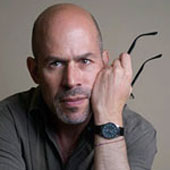Mexico City’s Rodeo Drive
How is Mexico City transforming its luxury goods economy?
October 16, 2008
On a September afternoon, the Louis Vuitton boutique on Avenida Presidente Masaryk opened its doors to a handful of its best clients, offering a few novelties and a show of the fall-winter collection.
Among the shoppers was a man with gray hair and a mustache whose companion appeared to have only recently reached legal rage.
A fellow in a suit and tie patiently sipped Moët Chandon while his wife — hovered over by three patient and smiling assistants — looked over nearly every item in the store.
A kid in his early twenties spoke on his cell phone while trying on shoes, completely ignoring the salesman who laced them for him.
A few mother-and-daughter combinations arrived. The moms tended to look over the classic items, while their offspring checked out the more contemporary accessories, such as a multicolored mink handbag that cost just under 15 thousand dollars.
The gray-haired man bought a bag for his consort, removing from his pocket a staggering wad of five-hundred-peso bills.
Many of Louis Vuitton’s customers — indeed, many of the customers in the various boutiques that line Presidente Masaryk — pay in cash. This could indicate that they work in businesses that handle hard currency.
On the other hand, it might mean that they don’t want to leave traces of their purchases — perhaps the man with the young girl is married to some one else.
There is also a possibility that someone who carries around thousands of dollars in cash is a drug dealer.
In any case, after the salesman rang up the handbag, the man and the girl left the store, climbed into a BMW 3251, and disappeared, leaving in their wake on the sidewalk a cluster of chauffeurs and bodyguards. Security, both private and public, is ubiquitous in this neighborhood.
At the dawn of the 21st century, multinational purveyors of luxury goods began to realize that Mexico is the most stable economy in Latin America and that, while half of its populace lives in poverty, around 10% of its more than hundred million citizens have an enticing amount of disposable income.
At least a couple of million of those people live in greater Mexico City, so some of these brands, such as Louis Vuitton, Cartier, and Chanel, opened flagship boutiques on Avenida Presidente Masaryk (the local equivalent of Rodeo Drive, Fifth Avenue, or Bond Street).
In addition to Vuitton, a dizzying number of international luxury brands are represented on Masaryk, including Mercedes-Benz, BMW, and Audi, Hugo Boss, Max Mara, and Ermenegildo Zegna, Brioni, Bulgari, and Burberry, Ferragamo, Fendi, and Furla, Cartier and Chanel, Tiffany, Hermes, and DKNY.
At first the brands had an uphill climb. Traditionally, Mexicans who have enough money to spend five thousand dollars on a watch are also in the habit of getting on a plane to buy it in Europe or the United States.
You gain points on the social scale by mentioning that you bought a garment on a trip to Houston or San Diego, or better yet, Paris or New York.
Indeed, in the Mexico City boutiques of Louis Vuitton and Cartier, customers of that stripe tend to buy one item under emergency circumstances (say, that handbag she absolutely needs for an important party) and do their heavy-duty shopping in other climes. Their freer-spending niche customers are among the nouveau riche, politicians, and drug traffickers.
Polanco, the district where Avenida Masaryk is situated, has long been the most centrally located upscale neighborhood in Mexico City. Many of the best restaurants in the D.F. are there, and patronizing them is a delightful escape, however temporary, from some of the city’s harshest moments.
After a few glasses of wine and a spectacular meal, you can almost believe you’ve had your lunch in Europe or New York. (The bill reflects the similarity.)
However, once out on the street it isn’t long before you are confronted by a reality check — the kid selling Chiclets in traffic, the phalanx of brown-faced security guards who protect the area, the parade of maids who take care of the luxury apartments.
Editor’s Note: Reprinted from First Stop in the New World: Mexico City, Capital of the 21st Century by David Lida with permission of Riverhead Books, a member of the Penguin Group (USA), Inc. Copyright (c) 2008 by David Lida.
Takeaways
Mexicans who have enough money to spend five thousand dollars on a watch are also in the habit of getting on a plane to buy it in Europe or the United States.
At the dawn of the 21st century, multinational purveyors of luxury goods began to realize that Mexico is the most stable economy in Latin America.
While half of its populace lives in poverty, around 10% of Mexico's more than hundred million citizens have an enticing amount of disposable income.
In addition to Vuitton, a dizzying number of international luxury brands are represented on Avenida Presidente Masaryk.
